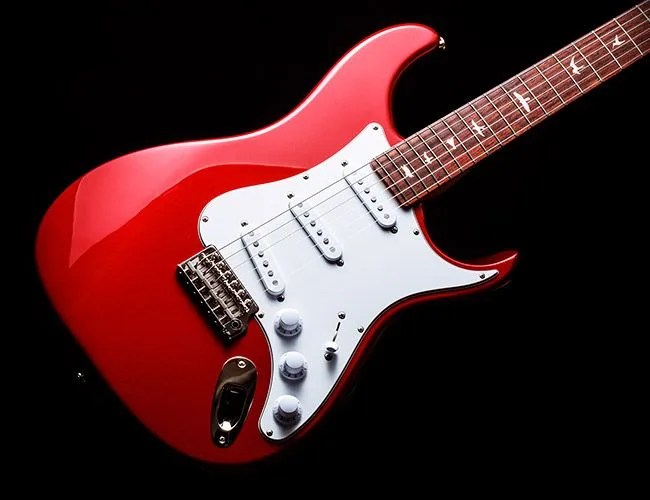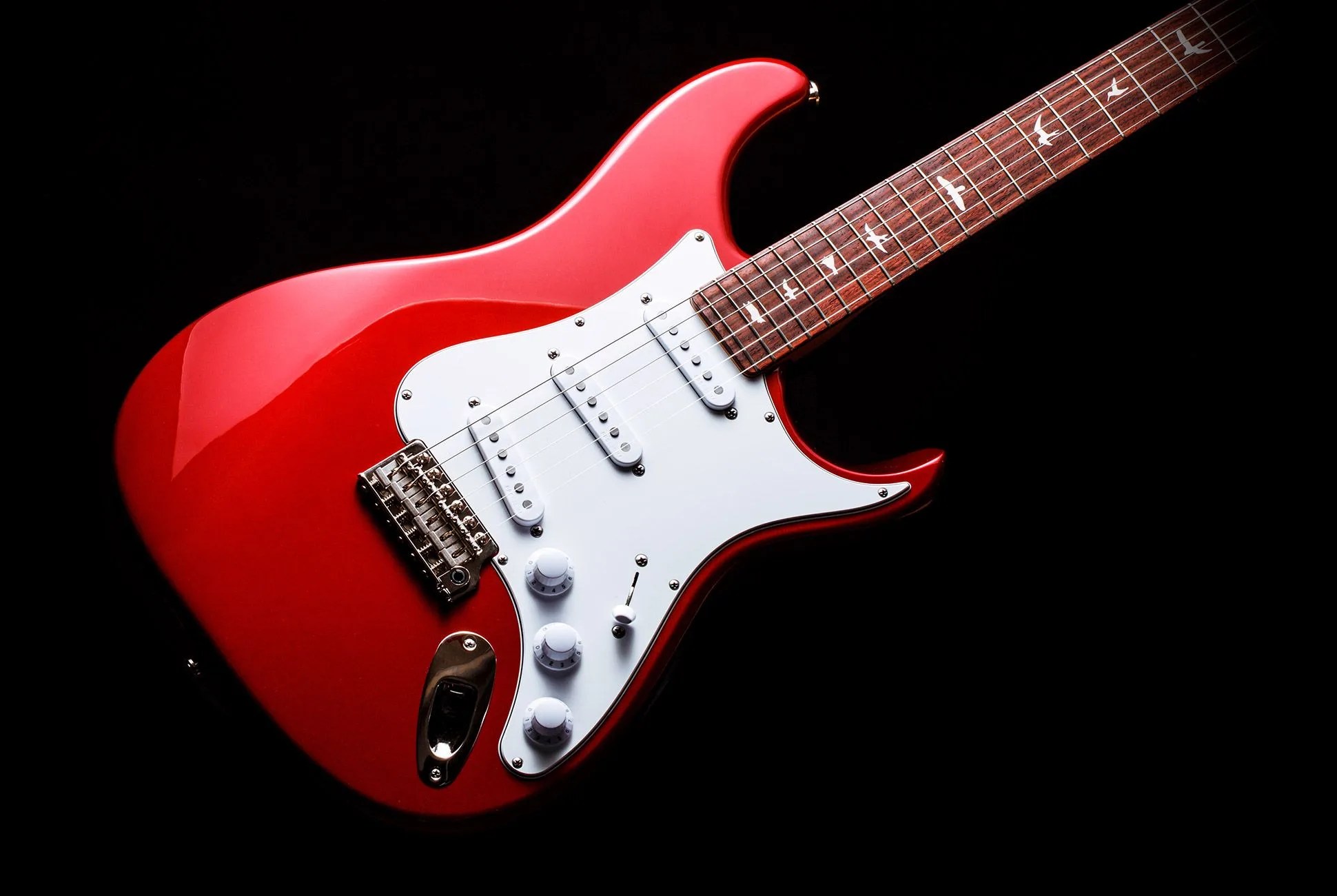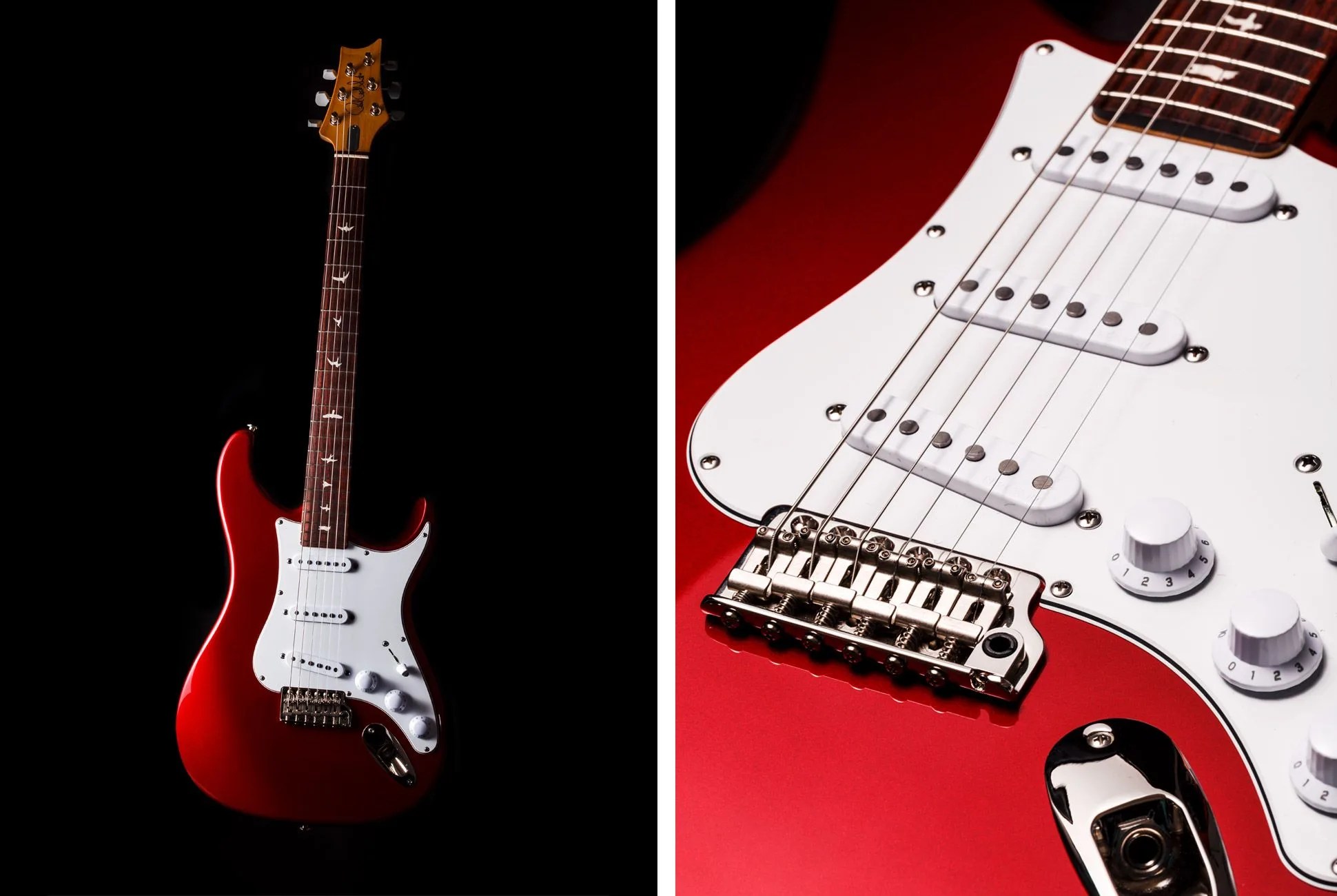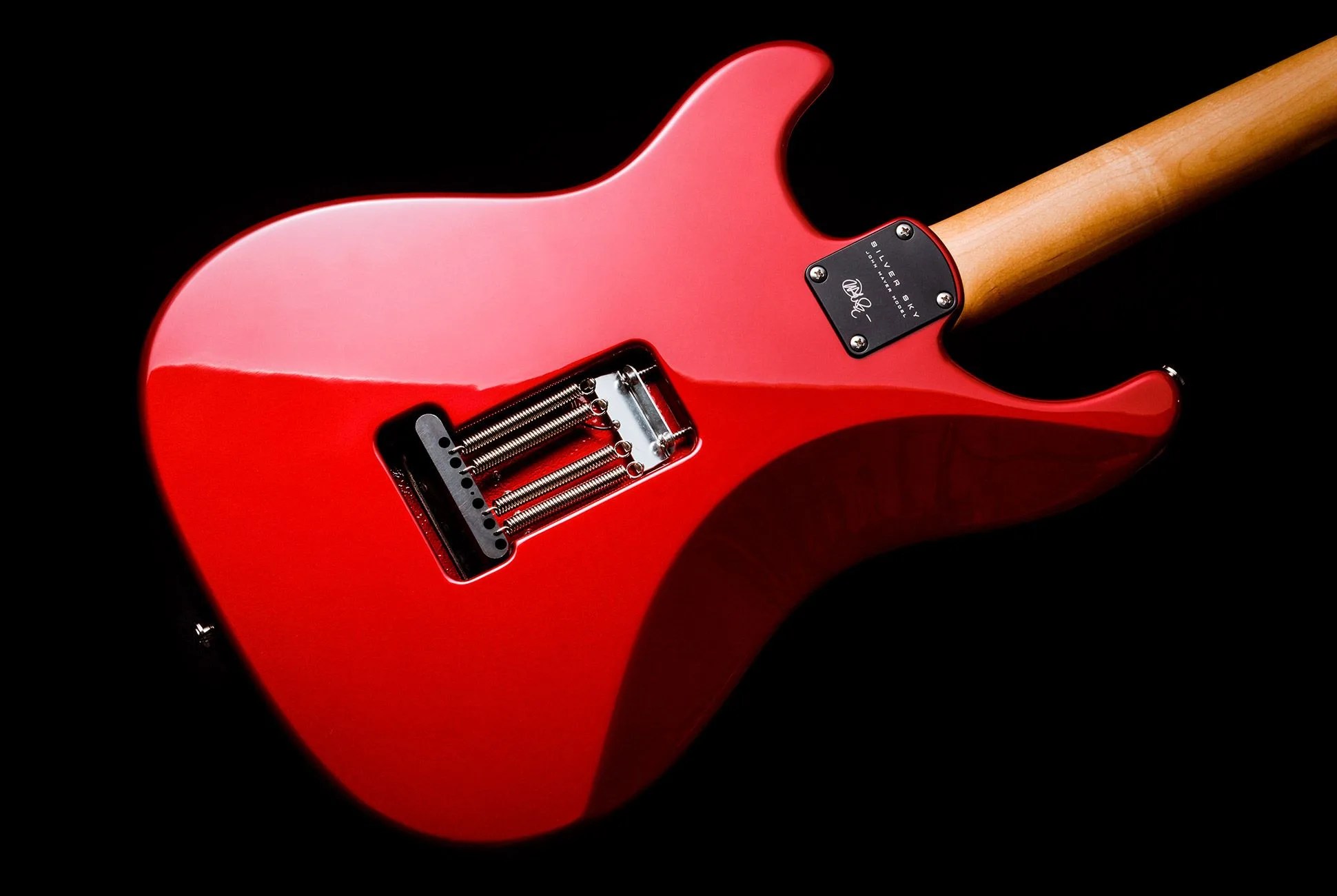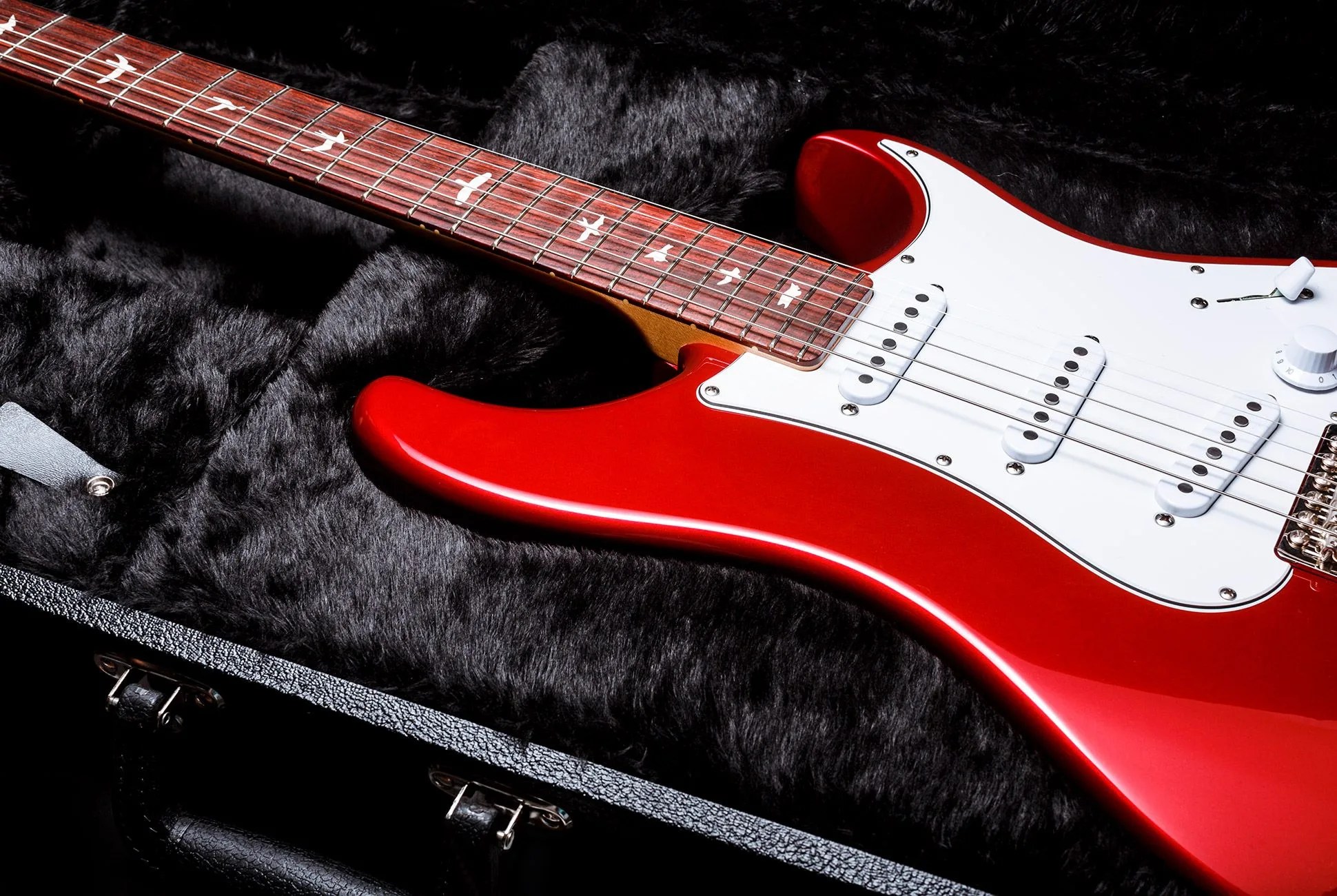5 photos
On March 5, guitar maker Paul Reed Smith announced a new John Mayer signature guitar called the Silver Sky. The design is immediately familiar to guitarists, inspired by Mayer’s instrument of choice for the majority of his career, the Fender Stratocaster. Though this instrument takes cues from vintage ’63 and ’64 Strats, it is not just another Fender copy. Mayer and PRS spent over two years designing the guitar, starting from the ground up to maximize playability and function.
In 2014, nine years after the debut of Mayer’s best-selling signature Fender model, the singer-songwriter announced his split from the brand. Since then, he played numerous PRS guitars on stage for both solo concerts and engagements with Dead and Company. The past two summers, he collaborated with PRS on the Private Stock Super Eagle and the Private Stock Super Eagle II, $11,500 guitars he used to channel aspects of Jerry Garcia’s tone. His signature model, which is offered with a far more accessible $2,300 price tag, started as an idea almost a decade ago. “I had an idea for a guitar — and this goes back about 10 years — a guitar that is sort of the future of the classic [Strat] design,” Mayer said in a recent livestream.
Since its announcement, message boards have been buzzing about the guitar: is it just a blatant Strat copy? Why’d it take so long to design? What, if anything makes it better than a high-end Fender? To answer some of the more pressing questions, I got my hands on a Silver Sky and tested it for a week.
The Good: For Strat players, this guitar will feel and sound very familiar. If you’re accustomed to the design idiom and sonic palette, you’ll be at home. Tonally, the guitar is even across all registers and has a bright sound that is neither brittle nor harsh. As you’d expect from PRS instruments, the guitar has great intonation and the pitches are clear and focused throughout the fretboard — this is a precision instrument. Each position on the five-way pickup switch occupies its own rich aural landscape which can be shaded additionally with the volume knob and two tone controls. As a whole, the guitar is incredibly responsive to touch and right-hand nuance.
As for the neck? It’s got a 25.5-inch scale length, a 7.25-inch fretboard radius and a more substantial shape. The PRS acoustic frets (smaller than what you find on other PRS electrics) and a lower action make this guitar effortlessly playable, out of the box. For the price, this guitar is a great value for the right player — the build quality is top tier and the sonic palette is ample.
